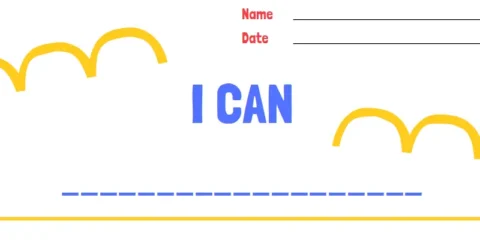Main aim
The aim of this lesson is for students to correctly identify a set of common descriptive adjectives (and one adverb) and their opposites.
Materials
Here’s what we’ll need:
- Opposites song video at https://youtu.be/HKev6QbYTVM
- Opposites matching worksheet, included at the end of this plan
- Opposites game at https://opposites.app/
The song and game links are classroom-friendly, but you may want to check them in advance to ensure they’re suitable for your group.
Download the lesson plan and materials
The lesson
Here’s what to do in the different stages of the lesson:
Lead in
Have students stand up and play the Opposites song video. Act out the lyrics of the song and encourage the students to follow along.
Vocabulary
Draw a chart with two columns on the board. On the left side write the following words: big, fast, up, loud.
Say these words and ask the students to repeat. Correct for pronunciation. Ask students what the opposite of “big” is (if they can’t remember, help them by acting out the song with no words). Elicit all four opposites from the students, helping with gestures as needed. Write the opposite words on the chart on the board. Reinforce pronunciation by drilling chorally.
Presentation
Explain to students that these words are opposites. Demonstrate with mimes, hand gestures or objects (e.g. a football and a tennis ball for “big” and “small”) as you say the words and their opposites again. Check students understand the meaning of “opposite” with concept-checking questions such as:
- Are big and small opposites? (Yes!)
- Are little and small opposites? (No!)
- Are fast and big opposites? (No!)
- Are fast and slow opposites? (Yes!)
Add 4-5 more words to the chart on the board (e.g. “happy”, “hot”) and ask students for the opposite word. Act out the words if they need help.
Restricted practice
Give each student a copy of the Opposites matching worksheet. Read the directions out loud and explain that they need to match the words by drawing a line. Write two opposite words on the board and draw a line between them as an example. Have all students complete the matching portion of the worksheet, then check answers together as a class.
Next, have them complete the writing portion of the worksheet. Explain that they need to write the missing letter for each word. The students can colour the images if desired. Correct as a class once all students have completed the second part of the activity. Assist as needed.
Less restricted practice
Divide the students into two teams. If you like, give the teams names and write them on the board.
Play the opposites game at https://opposites.app/. Explain that each team is going to take turns guessing the opposite word. Make sure to emphasise whose turn it is so teams don’t shout out answers. Each team gets one point for a correct answer. If a team gets the answer wrong, the other team has a chance to “steal” the question for extra points.
Optionally, divide the students into groups of 4 and have them write the answer on a piece of paper or small whiteboard – the first team with the correct answer gets 2 points and the second team gets 1 point (no points for a wrong answer).
———-
That’s it! You can download a printable version of the whole lesson plan and all the materials. And if you have other favourite ways of teaching opposites to very young learners, share them in the comments below.






